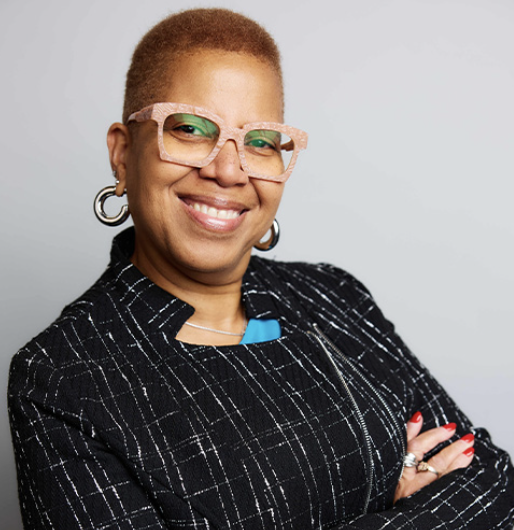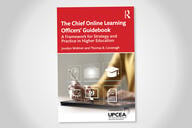You have /5 articles left.
Sign up for a free account or log in.
As a graduate of Washington University in St. Louis (History, 1991), I’m always interested in what is going on at my undergraduate institution. One of WashU’s accomplishments that I hear about as an alum is the expansion of access that the university has prioritized. Between 2019 and 2024, the percentage of first-year Pell-eligible students attending WashU has increased from 15 percent to 25 percent. To understand how WashU accomplished this change, I spoke with Ronné Turner, vice provost for undergraduate enrollment and student financial aid.

Q: Ronné, thanks for agreeing to participate in this conversation. Before we learn about the story of increasing socioeconomic access to a WashU education, let’s learn about you and your role. Can you describe what a vice provost for undergraduate enrollment and student financial aid does? And what was your educational and career path that brought you to the role?
A: As vice provost for undergraduate enrollment and student financial aid, I oversee the teams that recruit, select, enroll and support undergraduate students in their educational journey. Our admissions staff focuses on outreach across the globe to find the students who would benefit from WashU and add to our community. The financial aid office works closely with families and students to help them get to and through WashU. And the college prep program provides academic exposure, enrichment and support to students from St. Louis who come from less resourced backgrounds. All in all, we work to promote both higher education broadly and WashU specifically in our work.
After graduating with a bachelor’s degree in social and behavioral science from the Johns Hopkins University, I decided to work for my alma mater in the admissions office. I didn’t realize that I would find my true purpose in that first job after college. Eventually, I moved to the University of Maryland, College Park, where I obtained a master’s degree in social foundations of education and worked for a decade before joining Northeastern University, where I led undergraduate admissions and enrollment. After nearly 15 years at Northeastern University, I joined the team at WashU. I’ve been engaged nationally in admission and enrollment organizations and currently serve as the past chair of the Board of Trustees of the College Board.
Q: Why was it so important for WashU to make the investments necessary to increase the socioeconomic diversity of your student body? What factors drive that goal and how does the university prioritize economic diversity in a time of significant financial challenges for all of our universities?
A: WashU is an institution that offers its students incredible opportunities. Our academic programs are first-rate, the campus is beautiful and has incredible tools and resources, and the community is caring and supportive. Part of the university’s mission is to bring talented students, regardless of their backgrounds, together for the free exchange of ideas.
In fact, Chancellor Martin recently published, along with the chancellor of Vanderbilt, a set of principles that guide all we do. These principles are excellence, academic freedom and free expression, and growth and development. It is easy to see how supporting students from less resourced backgrounds goes hand in hand with these principles. And, particularly now, when higher ed is experiencing a moment of doubt and challenge, it is important to redouble our efforts to provide access.
Q: Can you take us through the specific steps and investments that WashU made to achieve such rapid growth in Pell-eligible student matriculation? Where do you go from here to continue along that journey?
A: Beginning around 2013, the university committed additional resources for students from limited-income backgrounds and for those who are the first in their family to attend college. We became members of the American Talent Initiative and committed to increasing our percentage of Pell-eligible students by 2025. To do that, we created more generous financial aid policies, expanding our no-loan aid packages for students from less resourced families in 2012.
In 2020, we introduced the WashU Pledge for students from Missouri and southern Illinois who come from families earning less than $75,000 per year. As our momentum grew, it made sense to take the next logical step and introduce a need-blind admission policy in 2022 so students are admitted on the basis of their accomplishments and talents, not on their ability to pay tuition. And then, in 2024, we were able to introduce the most significant change in our aid policy ever, no-loan packages for all students. It is our hope that no talented student, regardless of their family background, sees finances as a barrier to entry at WashU.
We work hard every day to share that message. The university also understands that getting students to WashU is only part of the equation. We also work hard to get them through WashU, ensuring they graduate debt-free and ready to pursue their career or graduate education goals. The Taylor Family Center provides all first-generation and limited-income students the support they need to persist and succeed at WashU.
Our current plan is to continue the work we’re engaged in, ensuring that our outreach continues to encourage all students to consider WashU for their higher ed journey. We know that when a student picks WashU, we will do what it takes to help them succeed and be prepared for the next step in their lives. We continue to develop student experience here, with a fully reimagined Center for Career Engagement, the Bauer Leaders Academy and, as mentioned previously, the Taylor Family Center for Student Success. These programs provide the foundation for lifelong success and something we like to call “healthy excellence.” The concept here is that we want all students to be healthier—in all possible ways—when they leave us than they were when they arrived. That is a pretty good goal. And our faculty and staff, across academic divisions and student affairs, are all committed to making that a reality.




